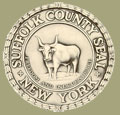Back to how to care for your lawn
Back to fertilizing your lawn
Back to sources and properties of lawn fertilizers
|
Fertilizer comparisons:
Characteristics of Organic Nitrogen Fertilizer Sources
| Organic Fertilizers |
Advantages:
- Little risk of nitrogen leaching into groundwater.
- Contain some macronutrients and micronutrients.
- Provide food source for soil microbes thus increasing microbial activity.
- Help reduce thatch build up.
- May provide some disease suppression.
- Have a low foliar burn potential.
- Contribute to long term improvement in soil health.
|
Disadvantages:
- Low nitrogen analysis so large quantities may be needed to supply recommended amount.
- High cost per pound of nitrogen.
- May apply nutrients when not needed since many sources contain N, P and K.
- Could lead to phosphorus runoff if your soil already has too much phosphorus.
- Availability of nutrients depends on temperature and has limited cool season response.
- Hard to predict nutrient release and turf response.
- Some may have an objectionable odor.
- May be difficult to handle and apply uniformly.
- Blended not homogenized, so may not be applied uniformly.
|
Contents and analysis of some commonly used organic fertilizers:
- meat, bone, poultry and fish meal 5-6-6
- digested bio-solids, sludge 6-2-0
- composted turkey litter and manure 5-2-4
- poultry feather meal, bone and blood meal 6-1-3
- corn gluten meal 10-0-0
|

